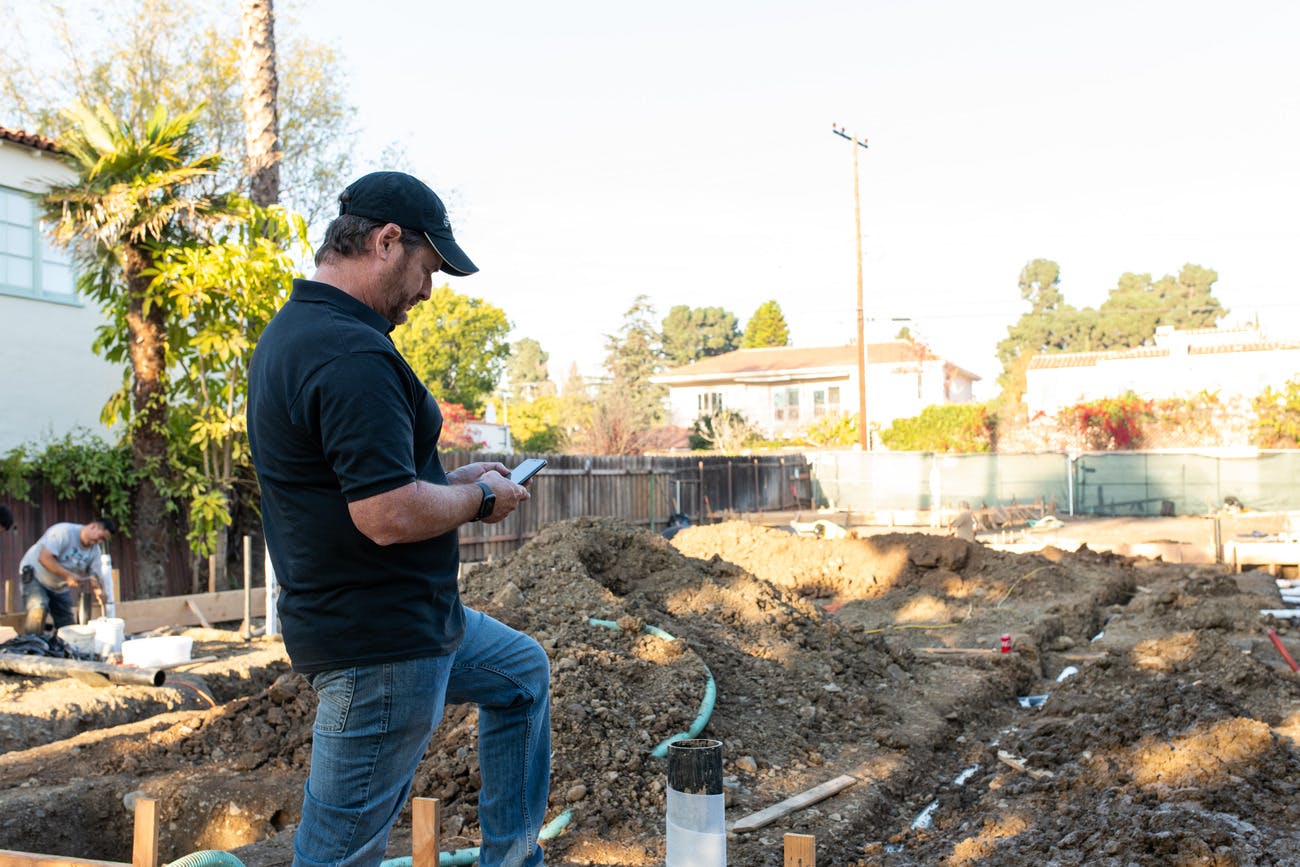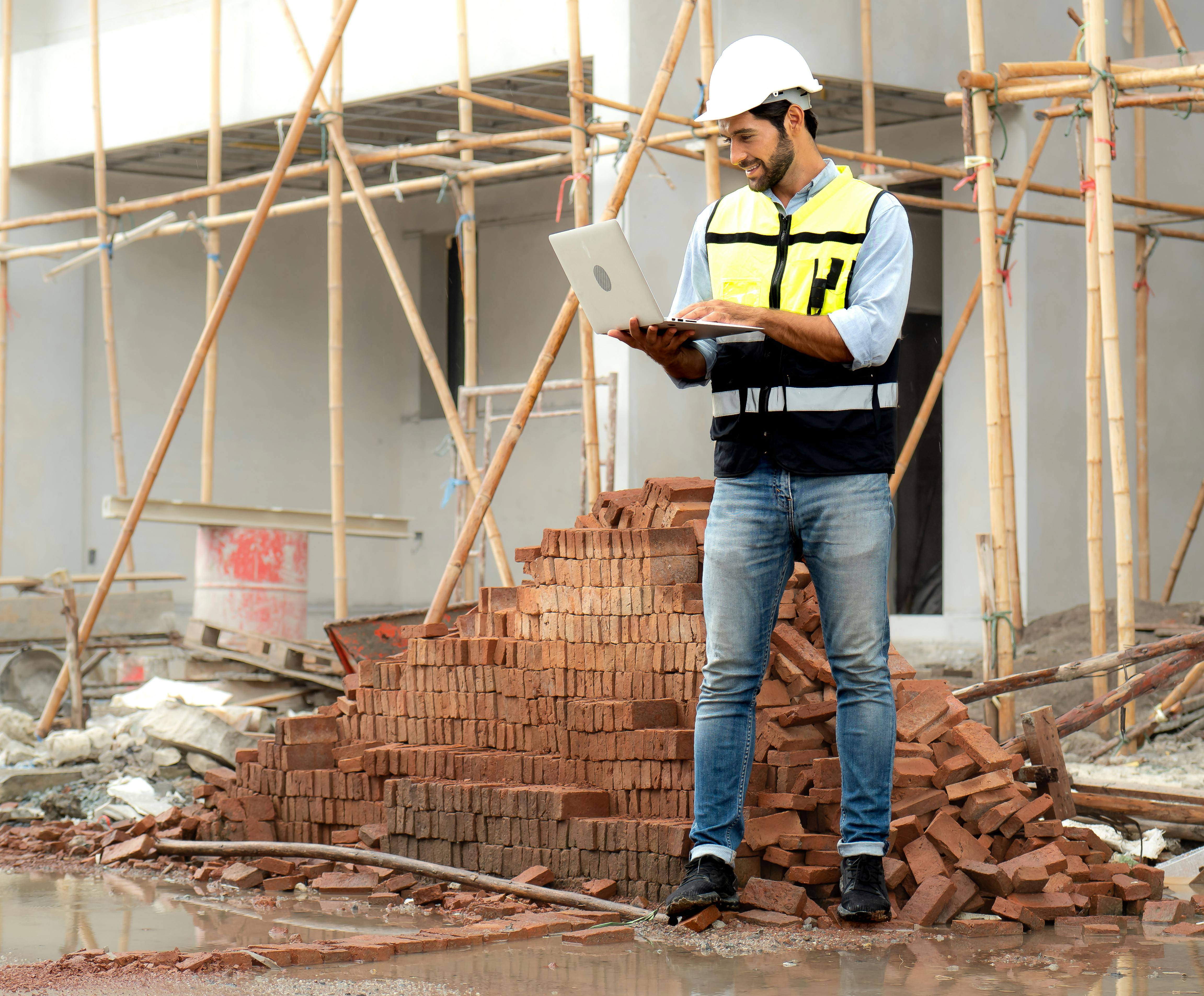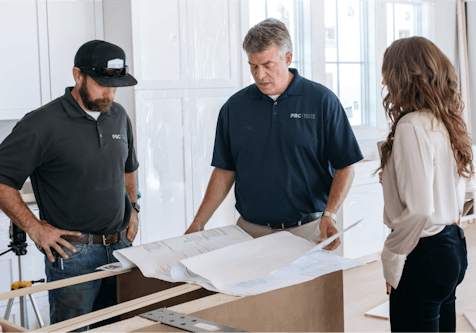The Ultimate Guide to Managing Residential Construction Projects Effectively
Keep your builds on track and your clients happy with this essential guide

Every construction project is the sum of many moving parts. Managing each of those parts well is the key to ensuring not just timely completion but staying within the budget — not to mention keeping stress to a minimum for you, your workers and the client. In this handy guide to managing residential construction projects, we’ll share everything you need to know, including the elements of a project, the qualities you’ll need as project manager and the types of documents and digital tools that can help you learn how to manage construction projects effectively.
Click on a link below to jump straight to the section you’re most interested in:
- What is construction project management?
- Why is it important?
- What are the phases of a construction project?
- Who is usually responsible for project management?
- Roles and responsibilities of a construction project manager
- 7 qualities of a construction project manager
- Important construction project management documents
- Tips for how to manage construction projects
- Common construction project management mistakes
- Tools for better construction project management
- Benefits of construction project management software
What is construction project management?
This is the natural first question to wonder about when you’re discovering how to manage construction projects. It simply refers to the process of ensuring that all the elements of a construction project, including pre-building and follow-up tasks, are coordinated and executed successfully — and ideally as efficiently as possible. And most project managers (PMs) must also learn how to manage multiple construction projects successfully, not just one at a time.

Why is effective construction project management important?
Effective project management allows a project to be completed on time, within the budget, and with as few headaches and hassles as possible. It also conveys a professional approach to clients and team members, allowing everyone to do their jobs effectively. All of this contributes to the possibility of future work through referrals and repeat business, and helps protect the bottom line both on a project basis and for the business overall.
What are the phases of a construction project for managers?
Each project entails six general phases. And while we’ve broken them down by category, each one follows and builds on the previous one, so it’s important to pay attention to each one when you’re managing residential construction projects.
- Marketing and Lead Management Phase. Bringing clients in the door through ads, direct mail and so on, and keeping track of campaign performance and leads for follow-up.
- Project Initiation and Conception Phase. Evaluating the project to see if it makes sense financially, and making sure all stakeholders are informed and on board. If the answers to both are yes, the PM creates a project charter or project initiation document (PID).
- Project Planning (Pre-Construction Phase). This is where a PM must be a master at knowing how to manage a construction project step by step, because the PM must create an official project management plan (PMP), which details all the steps to be completed as well as the scope, timeline and budget.
- Implementation/Execution (Construction Phase). Once work begins, the PM assigns resources, sets up tracking systems and implements the plan’s steps.
- Performance and Monitoring (Evaluation Phase). Regularly assessing how the project is going compared with the PMP’s specifications is also an essential part of managing residential construction projects. The manager measures progress and performance and adjusts any schedules or the scope of work accordingly.
- Closing Phase. PMs review the project execution, called a post-mortem, to discover if anything didn’t go according to plan and what might be improved upon for future projects.

Who is usually responsible for project management in construction projects?
A project manager could be a person on staff at the construction company or could be someone hired on a per-project basis. But either way, given the complexity of this job, generally this person’s sole responsibility is project management.
Roles and responsibilities of a construction project manager
While every project differs, and in some cases certain responsibilities can be delegated, the PM is responsible for overseeing the entire project, and ultimately must answer for its satisfactory completion. The PM typically has six direct responsibilities in managing residential construction projects.
- Estimating project costs and creating a budget
- Setting the schedule and the phases of execution
- Communicating with team members and other stakeholders
- Make sure contracts are understood by all parties
- Supervise subcontractors, artisans and other workers
- Do all necessary risk management

7 qualities of a construction project manager
The following eight elements will serve a PM well as they learn how to manage construction projects and then gain actual experience.
- Flexibility to handle different personalities and issues, adjust the schedule as needed and more
- Knowledge in several areas related to construction, such as budgeting, hiring, motivating team members and managing schedules
- Analytical ability and being detail-oriented
- Being a team player and helping others work well together
- Good communication skills, to keep both workers and the homeowners looped in on what they need to know
- Patience and perseverance, to deal with issues that arise and keep the project progressing toward completion.
- Values, ethics and caring about quality and the team.
Important construction project management documents
As you learn how to manage a construction project step by step, you’ll need to know about the types of documents you’ll be dealing with throughout the life cycle of the project. These are the important ones.
- Scope of work. This outlines all the activities included in the project. It includes objectives, milestones, deliverables and outcomes.
- Design documents. Sometimes these are digital and sometimes they’re hard copies, and they include blueprints, floor plans, schematics and renderings
- Estimate. Based on takeoffs, the estimate is for the cost of the project from start to finish, including all pre-construction needs such as permits.
- Project schedule. Generally there are project milestones as well as a target completion date.
- Project budget. An itemized list of all the components that will cost money, from labor to materials to permits, inspections and more.
- Risk management plan. Defines the potential risks of a project and how to avoid them.
- Quality control plan. Details the process for how the contractor will ensure the level of quality as specified in the contract.
- Change orders. Anytime a specified element is changed, whether it’s a countertop material, a design modification or something else, it must be documented in a change order.

Tips for how to manage construction projects step by step
1. Marketing and lead management phase. Even though work hasn’t technically begun, keeping organized during this phase will ensure that you make the most of your qualified leads. You can do this by:
- Having an organized system to store communication and documents, both as relates to leads and for overall marketing efforts.
- Creating a quality control plan that documents your process for ensuring quality marketing efforts and lead follow-up.
- Creating a risk management plan that focuses on marketing and advertising efforts, types of clients and anything else related to getting the word out about your business.
2. Project initiation and conception phases. This is an exciting time for many PMs, whether they’re just discovering how to manage construction projects effectively or they’re more experienced. It involves getting to know new clients and exploring their design wish lists, and coming up with creative solutions to any design challenges. To keep your efforts organized, you’ll want to:
- Create a project kickoff checklist. This could include things like having the homeowners fill out a questionnaire and sharing information about your process.
- Make sure you understand the scope of work. Also pay attention to how likely the clients are to stick with it. Are they continually changing their mind even in the early stages, or do they have a fairly clean vision for the project? Check out our handy guide to writing up a scope of work too.
- Automate your estimation process. Using software that calculates automatically and includes pre-populated estimating templates, such as Houzz Pro, will save you time and reduce error. See also our articles on how to create construction takeoffs and how to create construction estimates.
3. Project planning phase. This is still pre-construction but has many components you’ll need to pay attention to.
- Read all contracts with workers thoroughly, and learn how to create a construction contract that includes everything it needs to in order to protect you and your business and make sure everything is spelled out clearly.
- Automate your billing process with software, to save time and effort.
- Create a project schedule. It should include milestones as well as the target completion date.
- Detail the milestones. What are the smaller steps that need to happen to hit those milestones?
- Collaborate with subs and vendors. Make sure their skills and schedules align with what the project needs, and that their attention to quality matches yours.
- Outline the roles and responsibilities of everyone on your team, from the accountant and business manager to the person who will lay that handmade tile.
- Create a communication plan. Perhaps you’ll communicate through daily digital logs, phone chat every other day and/or have weekly in-person meetings.
- Hold a schedule review meeting. Gather those involved and cement the schedule, making sure it works for everyone.
4. Implementation and execution phase. Now you’re into the construction portion, and knowing how to manage construction projects well is essential for the project to go smoothly.
- Streamline communication with your crew and vendors. You can do this by using digital tools that everyone can access, so you don’t have to waste time repeating the same information to different parties.
- Use daily logs. Again, everyone can access these so you avoid having to repeat yourself. Check out our article on how to write effective daily logs.
5. Monitoring phase. This is when you keep an eye on performance and project progress.
- Keep your team and vendors accountable. This means staying on top of what they’re supposed to be doing and making sure they’re doing what they need to do to hit their project milestones.
- Update the schedule and budget as needed. Anytime something changes that will affect the timeline or the budget, it’s important to document it right away.
- Write up change orders as needed. These are your forms of documentation to show that the change was discussed and approved by those involved.
- Keep stakeholders informed. Whether change orders have been submitted, the budget or timeline has changed, or something else has occurred that will affect what’s been decided upon, you need to let the stakeholders know.
- Arrange and manage inspections.
6. Closing phase. The work is complete for the client, but there’s this one last step for your business. It involves conducting what’s called a post-mortem, which is the process of reviewing the project to see what went wrong and right, and what might be improved for future projects.

Common construction project management mistakes
Knowing what to watch out for can help you avoid problems and keep your construction projects running smoothly. Here are a few of the top problems to know as you learn how to manage construction projects effectively.
- Delayed communication. All team members should be kept in the loop in real time.
- Scope and budget creep. Whether the homeowners change their mind or planning has been poor, expanding the work scope and/or the budget on the fly can cause issues with successfully completing the project.
- Safety violations. These not only put workers at risk; they can lead to failed inspections.
- Lack of centralized information. When a crew and clients get information from different sources, it can lead to issue-causing inaccuracies and miscommunication.
- Undefined milestones. Project milestones exist to keep the timeline on track. Without them, it’s easy for the completion date to become extended.
- Lack of stakeholder communication. This can result in unhappy clients as well as a loss of trust.
- Using outdated or manual processes. Tech exists to reduce the chance of human errors, which are all too easy, especially as you’re figuring out how to manage multiple construction projects.

Tools for better construction project management
Digital tools can make a PM’s job easier and reduce errors. These include:
- Takeoff and estimating tools. Accurate quantities and prices are essential to staying budget. Using estimating software that calculates automatically and contains templates that are pre-populated with standard materials and local costs can go a long way in saving time and reducing mistakes.
- Cloud-based document storage. Documents are much easier to find, track and share when your project collaboration takes place in the cloud and files are available anywhere you go.
- Real-time messaging. Keep everyone in the loop without delay and have a record of all your messages in one place.
- Project schedule templates. Save lots of time by starting with digital templates for creating the timeline, which you can customize to fit each project.
Benefits of construction project management software
No need to reinvent the wheel as you learn how to manage a construction project step by step. Software can help you with the following:
- Task delegation. When everyone has access to the tasks and timeline in real time in a centralized location, there’s no need to spend time communicating with your crew members individually.
- Timeline visualization. Graphic representations provide at-a-glance info in an easy-to-digest format, and when you create them digitally, you can update them easily.
- Save time while improving accuracy. Inputting info manually takes a lot of time and is inefficient. Plus, anytime you do something by hand, there’s the potential for errors.
- Mobile capabilities. Having all the design files, timeline, budget info and more in the cloud means you can update and share from wherever you go.
- Integration with other software. When it comes to finances, having QuickBooks integration with automatic syncing is a huge time-saver.
- Centralized client and team communication. No need for late-night phone calls or repeating the same info to different people in different formats. A centralized dashboard and project logs offer efficient ways to communicate with clients and crew.

Conclusion
While managing residential construction projects involves many moving parts, you can keep on top of them all with the knowledge provided here and the right software to support your efforts. Check out Houzz Pro, the all-in-one dedicated software for construction pros that saves time, improves processes and enhances the client experience. You can even try it free!
To continue learning read our next guide chock full of Construction Collaboration Tips!

Want advice delivered to your inbox?
Unlock industry insights and updates for contractors and design pros
By signing up, I agree to the Houzz Terms of Use and Privacy Policy and that Houzz may use my information to contact me about relevant content, products, and services.



Join the conversation by commenting or asking a question below. The Houzz team reads every single comment, and we’ll get back to you by email if you need us!